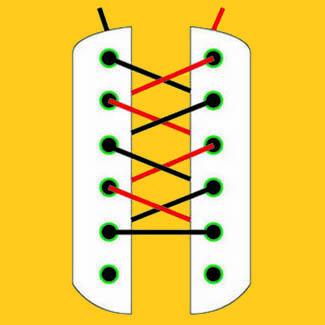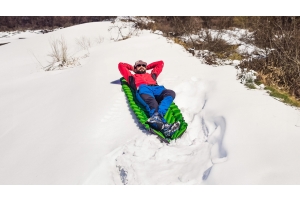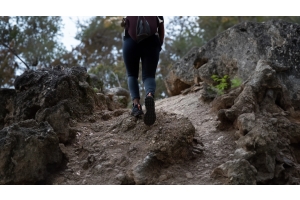
Four Lacing Methods for Hiking Boots
Hiking boots are essential gear for exploring the outdoors, but an ill-fitting pair can turn your adventure into a painful ordeal. Thankfully, the right lacing technique can make a world of difference. Here are four lacing methods that can help you conquer the trail with comfort:


1. Surgeon's Knot:
This simple and versatile knot is great for preventing heel slippage and securing your foot comfortably in the boot. It's ideal for hiking on uneven terrain, especially when carrying a heavy backpack.
Advantages:
- Prevents heel slippage: The surgeon's knot creates a snug fit around the heel, ensuring your foot stays firmly in place during descents and other challenging terrain.
- Improves stability: By locking your heel in place, this lacing method provides increased ankle stability, reducing the risk of injuries.
- Simple to learn and tie: Even if you're not a knot-tying expert, you can master the surgeon's knot with a few practice runs.


2. Window Lacing:
This technique is designed to alleviate pressure points on the top of your foot, particularly for people with high insteps or bunions. It creates a "window" over the problem area, allowing for better blood circulation and reducing discomfort.
Advantages:
- Reduces pressure on the top of the foot: The window lacing technique effectively alleviates pain and discomfort caused by pressure points, making long hikes more enjoyable.
- Improves comfort and fit: By eliminating pressure points, this method ensures a more comfortable and personalized fit for your feet.
- Lightweight and breathable: The window lacing creates space for better air circulation, keeping your feet cool and dry during strenuous hikes.


3. Toe-Relief Lacing:
This temporary technique is ideal for situations where your feet feel uncomfortable or numb after hours of hiking. It provides immediate relief by loosening the laces around the toes, allowing for better blood flow and circulation.
Advantages:
- Immediate relief from discomfort: The toe-relief lacing offers quick relief for tired or numb toes, allowing you to continue your hike without pain.
- Easy to adjust: This temporary technique can be easily adjusted on the trail without removing your boots.
- Ideal for descents: Loosening the laces around the toes can help prevent blisters and discomfort during descents, especially on steep terrain.


4. Heel Lock Lacing:
This classic lacing method locks your heel into the boot, preventing slippage and ensuring a secure fit. It's ideal for preventing blisters and discomfort, especially on uneven terrain or long hikes.
Advantages:
- Prevents heel slippage: This lacing technique creates a snug fit around the heel, preventing your foot from sliding around in the boot during descents and other challenging terrain.
- Improves stability: By locking your heel in place, the heel lock provides increased ankle stability, reducing the risk of injuries.
- Simple to learn and tie: Mastering the heel lock lacing technique requires only a few practice runs, making it accessible to hikers of all levels.
Remember:
The best lacing method for you depends on your individual foot shape and the type of terrain you'll be hiking on.
Experiment with different techniques to find the one that provides the most comfort and support.
Don't be afraid to adjust your laces throughout the day as needed to maintain a comfortable fit.
With the right lacing technique and comfortable hiking boots, you can conquer any trail and enjoy the outdoors to the fullest. Happy hiking!
Sources:
REI Expert Advice: How to Lace & Tie Hiking Boots
52 Hike Challenge: Laces for Hiking Boots: Techniques, Tips & Tricks for the Perfect Fit
GORE-TEX Brand: Tie the Knot: How To Lace Hiking Boots
Kathmandu Blog: How to Lace Hiking Boots






